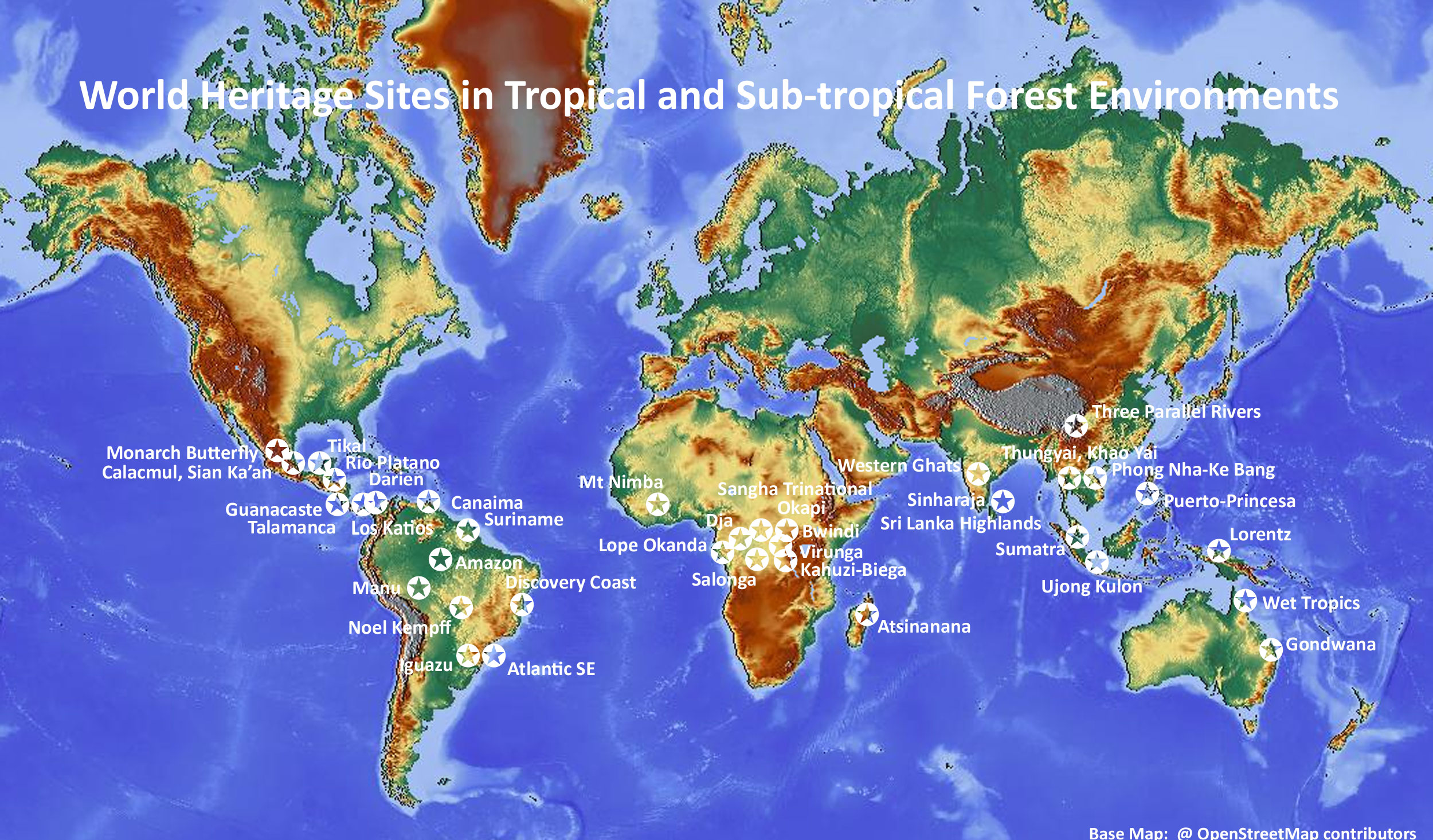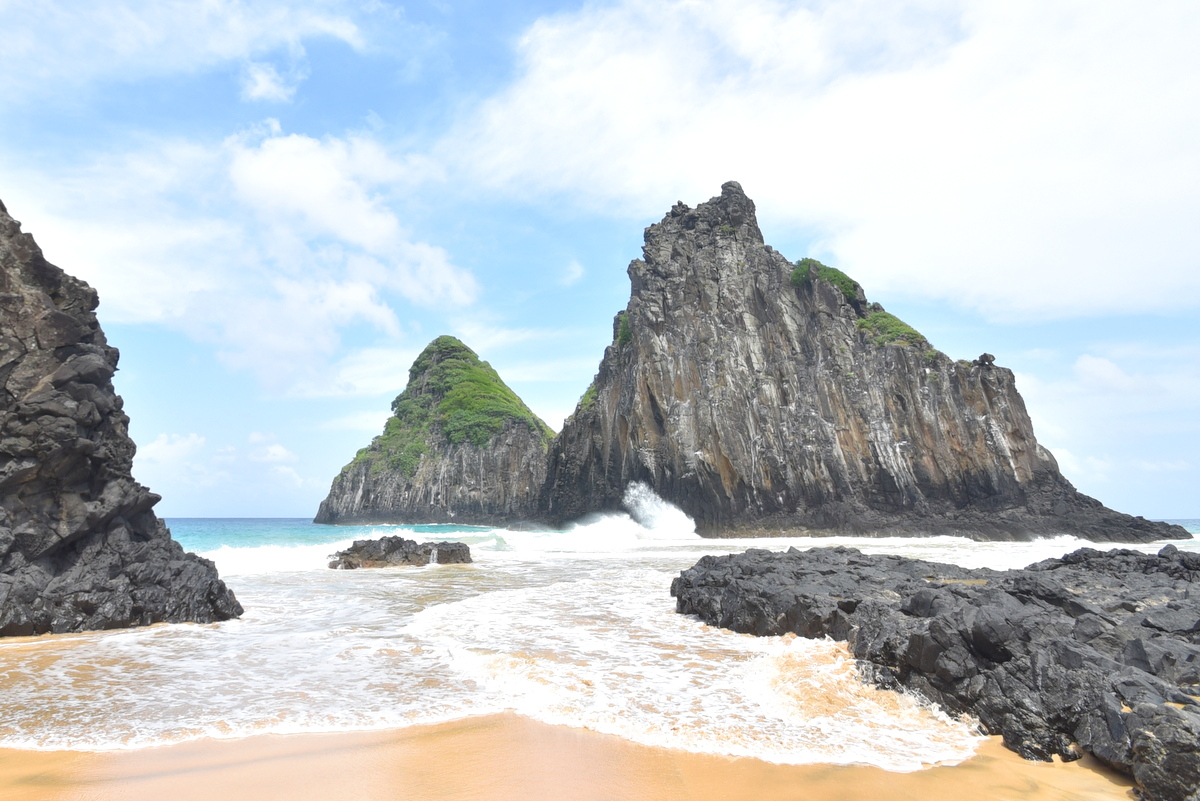Tropical and sub-tropical forests cover about 16% of the world’s land area and are the world’s most biologically diverse ecosystems supporting an estimated 50% of the world’s species. So it is appropriate that the number of sites in this category is higher than others. Natural world heritage sites have been inscribed from all the major tropical rainforest areas including the Amazon Basin (with sites in Brazil, Bolivia and Peru), the Congo Basin (with sites in D.R. Congo, Cameroon, Central African Republic and Gabon) and the rainforests of South-East Asia (with sites in Indonesia, Thailand, Vietnam and southern China). In addition many sites have been inscribed in places where rainforests cover relatively constrained areas, such as the islands of Sri Lanka, Madagascar and the Philippines; the narrow isthmus of central America (including sites in Mexico, Guatemala, Honduras, Costa Rica, Panama and Colombia); the coastal regions of India’s Western Ghats, Brazil’s Atlantic coast, the ‘Upper Guinea’ forests of West Africa and Australia’s Queensland; and a few more isolated montane areas in Uganda and Mexico.
‘To learn more about these spectacular places click on the links of featured sites in the table, or the photo tiles below. Note that some site pages are still under development so the links for these places are not yet active.’
Iconic Species: Amongst the iconic species that characterise rainforest environments are our closest relatives – the chimpanzee and bonobo – as well as gorillas, orang-utans and a multitude of monkeys, lemurs and antelopes that are specially adapted to rainforest habitats. Forest elephants (in Africa and Asia) are much smaller than their savanna-dwelling cousins in Africa, but no less important as habitat engineers – dispersing rainforest trees over vast distances and maintaining swampy forest clearings (‘Baias’) as saltlicks and playgrounds for the wider forest ‘community’ of animals.
Missing Links: Tropical and sub-tropical forests are relatively well represented on the world heritage list, with some recent additions filling significant earlier gaps. Nevertheless, some highly distinctive forests such as the ‘Eastern Arc Mountains’ in Tanzania, the East African coastal forests, the Korup/Cross River forest complex in Cameroon and Nigeria, as well as forest areas in Laos, Myanmar, peninsula Malaysia, the Andaman Islands, and more of the Indonesian island rainforests are all worthy of consideration.














